- +91 87790 01598
- healthcentred@gmail.com
- Mon - Fri: 10.00 – 13.00 / Closed on Weekends
Home » My Personal Care Book
If you have diabetes, you are one amongst a crore of diabetic patients in our country. However, there’s no reason for you to get disheartened. Once you decide to manage your diabetes intelligently you can make it your friend and live a healthy life.
Diabetes gives you an opportunity to lead a disciplined lifestyle, which is not possible otherwise.
DID YOU KNOW?
Diabetes is NOT a sickness. It is a state of health in which the sugar content in your blood exceeds beyond stipulated levels.
The unchecked rise of sugar level in your blood damages blood vessels and nerves, hence disturbing the smooth functioning of various organs i.e eyes, brain, heart, kidneys and feet.
In order to assess the control of your diabetes, you are required to do a blood sugar checkup and understand from your doctor about self-care of your diabetes.
With the advice of your diabetologist – a doctor specialized in the care of diabetes – you can most certainly manage diabetes and live a long healthy life provided you learn to follow the recommended diet, medicine and exercises.
The discovery of insulin was a major breakthrough in helping to control diabetes and its complications. To that extent diabetics, today are far more fortunate than those who were diagnosed before the discovery of insulin in 1921. The prescribed dosages of insulin, if taken together with exercises, diet control and cultivation of certain mental discipline helps you to lead a life with complete self-expression and happiness like any other non-diabetic.
Modern life is a life of tensions and anxieties. And the reasons are aplenty – stiff competition, children, education, problems in getting admissions to schools/colleges, small accommodation, towns overflowing with population, growth of demobbed economy, commuting to places of work, congestion, generation gaps, are some of the causes. All these add on to produce tension in a person. Leading a balanced life has become a hassle. These circumstances disturb the peace of mind easily. That is why you find there is an increase in the incidence of diabetes in our present time, especially at a young age.
Some people inherit diabetes from their parents, some get it because of their obesity, some due to mental tension and if you are careless you could help it grow.
However if you are one of those who have the determination to control diabetes, chances of success are abundant.
Read this PERSONAL CARE BOOK carefully. Follow the instructions. Maintain the record. Consult the doctor periodically. Observe religiously the daily schedule of diet, exercise, sleep and medication. You are bound to succeed in leading a NORMAL, HEALTHY LIFE.
Let Health Bless You.
Present Weight:________ kg
Desired Weight: Height in cm – 100 (for males)
Height in cm – 105 (for females)
Body Mass Index (BMI) __________
Desired BMI: <23kg/m2
Desired BP: 120/84 mm/Hg
Fasting Blood Sugar: 80-120 mg/dl
2 hrs Post Lunch/Dinner Blood Sugar: 120 – 160 mg/dl
GLYCO HEMOGLOBIN A1C i.e 3 monthly blood sugar average: < 7 gm%
HDL: > 50 mg/dl
LDL: < 100 mg/dl
Triglycerides: < 150 mg/dl
Cholesterol: < 200 mg/dl
Micral: Absent
Serum Creatinine: Ecg: Normal
Eyes- Fundoscopy: Normal
The tests that a diabetic is required to undertake are listed below with an indicator of the frequency at which these need to be done.
| WEEKLY – MONTHLY | FBS: Fasting Blood Sugar PLBS: 2 hours after Lunch PDBS: 2 hours after Dinner |
| 3 MONTHLY | GLYCO HEAMOGLOBIN A1c |
| 6 MONTHLY | URINE MICRAL LIPID PROFILE 24 hour urine Albuminuria 24 hour Creatinine clearance |
| 6-12 MONTHLY | ECG EYE CHECK UP AND DETAILED COMPLETE CHECK UP |
Remember: Diagnosis of a problem just when it begins to set, can save you from a lifetime of unwanted trouble.
If a Diabetic on oral medications or Insulin, suddenly feels uncomfortable drowsy, irritated, shakiness, sweating, palpitations and if teaspoonful of sugar relieves the symptoms then he has suffered low sugar attack. Furtherlowering of Blood Sugar is prevented by snacks like Chana, Chapati, Dal Rice etc. should be taken immediately after consumption of Sugar.
The following are the symptoms of Low Blood Sugar
A. Head & Neck
1) Headache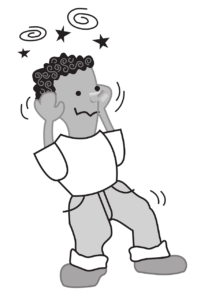
2) Diminished Vision
3) Double Vision
4) Anger Spells
5) Tingling
6) Numbness
7) Swelling, Trembling
8) Listlessness
9) Drowsiness
10) Unable to concentrate at work
B. Chest
1) Heaviness in chest
2) Palpitations
3) Chest pain
C. Abdomen
1. Increased Hunger
2. Nausea
3. Vomiting
4. Heaviness in abdomen
D. All over the body
1. Giddiness
2. Weakness
3. Cold Sweats
4. Shakiness
5. Irritability
6. Unconsciousness
7. Convulsions
8. Irrelevant movements
9. Tingling and numbness in hands and feet
E. Night Attack of Low Sugar
1. Heaviness of head after waking up in the morning
2. Headache
3. Sweating – Cold Body
4. Drowsy at night
5. Bad dreams
6. Crying spells
7. Temper tantrums at night
8. Easy fatigability
9. Tiredness
10. Weakness
11. Lethargy
12. Generalized Body Ache
13. Muscle Pain
14. Excessive Sweating
15. Giddiness
When your blood sugar goes below 80mg/dl, it is considered as hypoglycemia.
If you suspect Hypo, here’s what you should do
Don’t waste time BUT ACT!
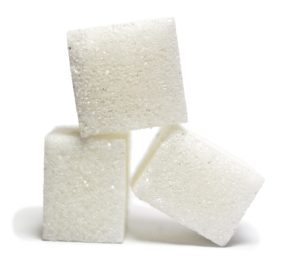
If possible, check your Blood Sugar to confirm you’re in a Hypo state.
If complaints / suggest Hypo and Blood Sugar is high, even then you treat like Hypo without any fear.
Remember: Giving yourself hypo treatment does not do any harm even if you were not really in hypo.
So here’s what you should do if your blood sugar is below 80mg/dl
• Immediately take (or give) 3-teaspoon sugar/ glucose.
• Wait for 15 mins then recheck the blood sugar, if still below 80mg/dl, then again consume 15 gms or 3 tsp of sugar.
• Avoid Diet Drinks, Oily Sweets, Biscuits, Chocolate
• If Patient cannot swallow on his own, make a paste of 2-teaspoon Sugar or Glucose and put it in the mouth or rub like toothpaste on gums
• After recovery immediately take (or give) other food articles to avoid further hypo.
• Keep calm, be patient as it takes time to recover. Don’t over feed.
MINOR & MAJOR COMPLAINTS
Following is the list of symptoms that usually a person having high sugar experiences. Consult your doctor if you experience any of these symptoms.
Do not neglect them.
Do not treat them with tonics.
GENERAL
1. Weakness.
2. Tiredness.
3. Lethargy.
4. Excessive urination.
5. Collection of ants around your undergarments or urine.
6. Excessive thirst.
7. Increase appetite and body weight initially.
8. Subsequent loss of appetite and progressive weight loss.
9. Severe pain, burning, tingling, numbness, weakness, loss of sensation in hands and legs.
10. Heaviness in the abdomen and severe pain in the abdomen like surgical Emergency.
IN MALES
1. Cracks on foreskin
2. Fissures on foreskin
3. Burning
4. Itching
5. Pus-like discharge
6. Recurrent urinary infection
7. Unable to retract skin Of penis
8. Diminished – Sexual Desire
9. Absence of morning turgidity of the penis.
10. Erection failure
11. Premature ejaculation
12. Ejaculation failure
13. Secondary sterility (Unable to procreate after one or more child’s birth).
14. Primary sterility (Unable procreate totally since marriage)
IN FEMALES
1. Itching inside and around the vagina.
2. Foul-smelling purulent discharge/leucorrhoea.
3. Recurrent abortions.
4. Overweight newborn baby.
5. Congenital birth defects in the child.
IN CHILDREN
1. Emotional changes emotionally upset.
2. Irritability.
3. Lethargy – stops playing.
4. Increased thirst.
5. Increased volume and frequency of urine.
6. Night bed-wetting.
7. Overeating followed by under-eating.
8. Progressive weight loss despite overeating.
9. Feels weak despite eating.
10. Collection of ants around clothes and urine.
11. Progressive –severe weakness tiredness.
12. Giddiness.
13. Visual changes.
14. Feels exhausted initially on exertion later even at rest.
15. Recurrent fever/infections.
16. Breathlessness at rest without cough, expectoration.
17. Nausea.
18. Vomiting.
19. Dehydration.
20. Low Blood Pressure – hypotension.
21. Pain in the abdomen –may mimic surgical problem.
22. Fruity smell from breath.
23. Progressive drowsiness.
24. Unconsciousness.
BRAIN AND NERVES
1. Paralysis.
2. Partial paralysis.
3. Deafness.
4. Damage to cranial and peripheral nerves involving face, lips, arms and legs.
5. Pain type – burning, shooting, stabbing, squeezing, pus.
6. Tingling.
7. Numbness.
8. Diminished sensations.
9. Absence of sensations.
EYE
1. Recurrent eye infection.
2. Repeated change in refractive error.
3. Repeated change of spectacles.
4. Able to read better without spectacles for few days.
5. Bright shiny floating particles.
6. Broken vision.
7. Blurred vision.
8. Retinopathy.
9. Blindness.
10. Early cataract formation.
11. Glaucoma – increase eye pressure.
HEART
1. Silent heart attack.
2. Heart attack without chest pain.
3. Just vague complaints in chest/abdomen.
4. Fatigue.
5. Weakness.
6. Lethargy.
7. Heaviness behind the centre of the chest.
8. Breathlessness – initially on exertion, later at rest feels better with rest.
9. Gas in the stomach.
10. Nausea.
11. Vomiting.
12. Classical angina-like pain.
13. Feels better with rest / coronary vasodilators.
KIDNEY: NEPHROPATHY
1. Swelling of face, eyelids.
2. Swelling of legs.
3. Decreased urination.
4. Severe loss of appetite, nausea, vomiting.
5. Progressive reduction in daily urine production.
6. Failure of both kidneys at the same time.
7. Recurrent fever, urinary burning, urinary infection.
NERVES: NEUROPATHY ARMS & LEGS
1. Tingling
2. Numbness
3. Diminished Sensation
4. Feeling of walking over the cotton mattress.
5. Pain: burning, shooting, stabbing, squeezing, pus-like, cramps like.
6. Duration: intermittent, continuous, day and night, progressive.
7. Severe heel pain on getting up in the morning, then refreshes follows walking.
8. Absence of sensation
SKIN CHANGES
1. Recurrent skin infection.
2. Poor healing of the wound, incomplete or non-healing.
3. Dry Loss of hair, red, swollen, black.
4. Gangrene.
RECURRENT WOUND
1. Poor wound healing.
2. Non-wound healing.
3. Foul Discharge.
4. Blacking of skin.
5. Increased swelling.
6. Redness & tenderness.
PERIPHERAL VASCULAR DISEASE
1. Calf – thigh pain.
2. Severe pain initially on exertion, later rest pain.
3. Non-healing foot wound.
4. Gangrene.
JOINTS
1. Limited joint movement.
2. Severe joint pain.
3. Joint deformities.
4. Trigger finger.
5. Frozen shoulder.
6. Osteoarthritis.
VARICOSE VEINS
1. Varicose Veins
2. Swelling
3. Tortuous veins
4. Pigmentation itching
5. Ulceration
Physical activity is a physical a prayer to be done daily.
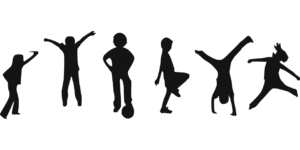
If it is not possible to go out due to time and place constraint, age, illness, bad weather or pollution, then it is essential to walk at home, just like we would sit at home and pray if it is not possible to go to the temple.
If you have joint trouble, arthritis of the ankle, knee, joint pain, then use soft cotton socks and soft canvas shoes for walking (even in the house.) This will protect your joints from further damage.
Preferable to walk, climb during your daily routine, thus reducing use of rickshaw, taxi, car, elevator as far as possible.
Walk for 30 minutes twice a day
OR 15 minutes 4 times a day
OR 10 minutes 6 times a day.
• Diabetes prevention programme DPP* has proved that even 30 minutes of a daily slow walk, at least 5 days a week can prevent diabetes.
• Take small snacks before you begin your walk
• Do not walk on an empty stomach – to avoid low sugar attack
• Do not walk for 2 hours following meals to avoid strain on the heart and to avoid a heart attack.
• If you have Ischemic heart disease (Heart attack) chest pain can occur after heavy meals food intake and if you do physical exertion after heavy meals, you have more chances of chest pain – heart attack.
Regular Walking Exercise shall help you in preventing your
Diabetes, High Blood pressure, High Blood Fat & Heart Attack
Walk-in addition to your routine work.
When you walk, walk with a spring in your step and with faith in your heart
Do other activities – household & Business activities, Yoga, Pranayam, and Meditation, Competitive sports –Fun games etc. in addition to your walking exercise.
Nutrition plan for a healthy person and a diabetic patient is same.
Like all other people, a Diabetic should remain away from 3 white poisons.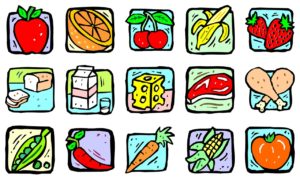
Have a balanced diet at regular time interval:
• Eat all cereals & gain energy.
• Eat all pulses & achieve growth- wear-tear –repair.
• Eat all vegetables – fruits & gain immunity – resistance – the power to fight illness.
• Take milk – milk products – oils and non-veg. food articles in moderation.
• Eat small quantities of food every 2 hourly. Do not keep large gaps in between 2 meals.
• Avoid heavy meals and fasting or skipping meals at any time.
PERMITTED
• All cereals are permitted (Rice, Wheat, Bajra, Jowar, Maize, Nachni)
• All pulses are permitted (Tur, Moong, Math, Chawli, Peas, Chana, Urad, Rajma, Beans)
• All fruits are permitted 150 – 200 gms per day (Even Grapes, Mango, Jackfruit, Chikoo, Custard Apple, and Banana)
• All tubers are permitted up to 50 gms per day (Potato, Sweet Potato, Yam, Suran, Beetroot, Carrot, Arvi)
PREFER CEREALS + PULSE + VEGETABLES COMBINATION:
Idli, Dosa, Upma, Tomato omelet, Chilla-Pudla, Dhokla, Khaman, Muthia.
Avoid Saturated fats like Dalda, Vanaspati etc.
Avoid deep-frying in any oil or Ghee.
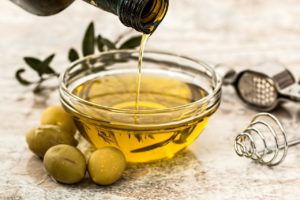
IMPORTANT POINTS TO BE TAKEN CARE OF: –
E.g. For a normal adult weighing 60 kgs maximum fat intake should be 20 gms/day (4 tsp) and if complications exist, fat intake should be 10 gms/day (2 tsp)
WHAT IS THE BETTER CHOICE?
• Vegetable oils do NOT contain CHOLESTEROL
(eg. sunflower, groundnut, safflower, soya, mustard)
CHOLESTEROL is PRESENT only in animal fats.
• All types of oil will give the same number of calories. For instance, 1 gm of oil gives 9 kcals.
• Dalda and vanaspati ghee contain(s) saturated fat, which is not good for the heart.
When you increase pulse intake and reduce cereal intake you can increase the protein content of your meals.
Increasing protein intake helps in the following;
• Reducing your fat – responsible for disease and its complications.
• Increases your muscle mass thus increasing your resistance power and reducing weight and Insulin resistance.
WAYS TO INCORPORATE PULSES IN THE DIET
• Boiled 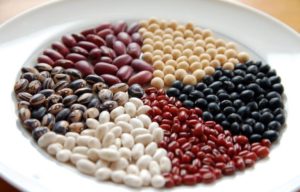
• Taken in form of vegetable or Usal
• Soaked and Crushed
• Sprouted form
– To be added in Pudla, Dhokla, Idli
• Soaked, Crushed and Fermented
– To be added in Dhokla, Idli, Meduwada, Dosa
• Sprouted Raw
– To be added in Salad, Raita, Dhokla, Pudla and Idli
• Sprouted Cooked and Steamed
– To be added in Salad, Raita, Vegetables, usal or incorporated in Parathas Thepla, Soups, Upma and Poha
• Roasted
– To be added in Chana, Soya bean (available in form of flour, nuggets (Nutrella), Soya chunks and Soya paneer (tofu)
• Soya bean flour can be added in the wheat flour while making chapatis.
• Soya chunks /nuggets can be added in pulav, noodles.
• Soya paneer can be replaced for the normal paneer in some recipes.
Use Mung, Math, Chana (Raw, Steamed or Cooked) as a filler or ingredient in the following food articles.
Yes, Diabetics can consume Rice.
By taking a proper quantity of rice:
You will not get Diabetes
Your Blood Sugar levels will not rise.
On the flip side By avoiding rice:
Your Diabetes will not be cured
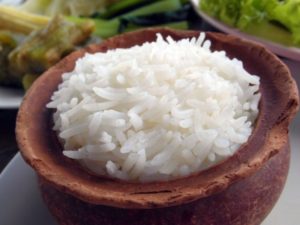 Your Blood Sugar levels will not be lower than what they would have been had you not consumed Rice.
Your Blood Sugar levels will not be lower than what they would have been had you not consumed Rice.
Boiled Rice is better than wheat chapati for four good reasons
Rice has 1 % fat calorie whereas wheat has 4 % fat calorie.
Boiled rice doesn’t require external fat for cooking. Wheat chapatti needs oil from the outside at least for dough preparation.
Rice has more volume when boiled, compared to powdered and roasted wheat.
Boiled rice has a better and higher satiety value than wheat chapati.
Forget the old notion: no rice for the diabetic because it leads to overweight.
1 (15 gm) chapatti = 1/3 Cup boiled cooked rice.
• High Blood Pressure
• Leg Swelling
• Heart Failure
• Kidney Failure
Use Lime, Ginger, Lasan, Coriander, Green Chilies, Clove, Cinamon, Jeera, Tamarind to improve the taste and reduce intake of salt.
• Rock Salt is crude salt
• Cooking soda, baking powder, Ajinomoto all salts, so avoid use in excess.
• Extra salt with Curd, Buttermilk, Salads, Chapati, and Rice etc.
• Salty food articles like Chatni, Pickles, Papad, Chatpata Masala, Chat Masala.
• Sev, Papdi, Gathia, and Chivda etc.
• It’s a day on which you suffer from any infection like Cough, cold, (infection), loose motions, fever to name a few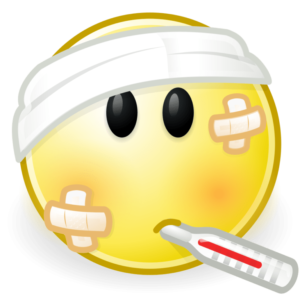
And here’s what generally happens on a sick day
• Unable to eat – chew – swallow and therefore tend to avoid food. Also, feel nauseous and want to throw up.When you suffer as above;
• DO NOT STOP FOOD AND DIABETES TREATMENT (tablets/injection).
• On a Sick Day, you need more food than you usually do – more medication tablets or insulin injections to fight illness.
• Take Liquid or Semisolid food in small quantity every 1-2 hourly even though you may feel like vomiting, rather it would actually help in stopping the feeling of Nausea and vomiting.
If need be take an antiemetic tablet. (Tablet to control vomiting.)
Cereals & Pulses Combination:
Dal-Rice, Curd- Rice, Mung- Rice, Khichadi, Dalia, Kanji, Porridge.
Barley water
Soups:
Vegetables, Boiled Pulses Boiled sprouts (Mung, Math, Chana) Soup.
Chicken, Fish.
Salty Liquids:
Soup, Dal water, Butter Milk, Kanji unstrained Fruit juice.
Milk Products:
Curd, Buttermilk & Lassi
Foot care is one of the most important aspects of self-care for the diabetic. Even the smallest injury of the foot, if not taken seriously and not treated promptly, may result in amputation of the foot.
REMEMBER, to take care of the skin, nails and the gaps between the toes is a must for healthy feet.
SYMPTOMS OF FOOT AT RISK
• Pain in the legs, which is relieved on walking or taking rest.
• Cramps in legs and feet at night.
• Burning pain
• Shooting pain, often worse at night that may be relieved on walking.
• Loss of sensation in the foot or any abnormal sensation.
• History of slow healing of cuts and scratches.
• The shiny appearance of skin
• Change in shape of the foot
• Callus formation
• Loss of hair on the foot and toes.
• Dry scaly and cracked skin swelling (edema) of feet pigmentation, varicose veins.
• Thickened toenail with fungal infection.
• Cold feet.
• Foot infection, ulcer and abscess
• GangreneIn order to avoid damage and ultimately amputation, the following precautions should be taken on a daily basis.
• Wash your feet daily with lukewarm water. Test the water with your hand or elbow before pouring it on your feet. The feet should be washed and not soaked.
• Wash and the dry area between toes with a thin cloth.
• If you have dry scaly skin use coconut oil.
• If there is excessive sweating use talcum powder.
• Make it a habit to inspect your feet daily after bath for cuts, bleeding, redness, cracks, blisters, burn marks, corns and calluses and infections; use a mirror to do so.
• Cut your nails regularly. Cut them straight and avoid cutting corners of the nail (it exposes the soft skin below the nail and causes damage.)
• Prefer nail cutting after the bath, (nails are soft) in good light and without any hurry.
• Wear clean cotton socks every day. Avoid socks with tight elastic.
• Use shoes made of soft leather or canvas with a broad front to accommodate toes comfortably. The sole and the inside of the shoes should be inspected every day for any foreign particles which may hurt the feet. New shoes should never be worn for a long duration. Use New Shoes for two to three hours daily till the time it doesn’t hurt.
• It should fit properly, neither too loose nor too tight.
• Purchase shoes in the evening, as foot size, is maximum in the evening.
• If there is foot injury or lesion give footrest i.e. do not walk, keep the leg elevated, do not touch the ground with damaged foot even once till foot lesion heals completely. Because of loss of sensation, it is possible that the patient does not feel the pain to the damaged foot, and hence may neglect the injured foot. It is extremely important that instructions are given by the doctor be strictly followed.
• CONSULT YOUR DOCTOR IMMEDIATELY: Early consultation in case of injury or infection will result in timely treatment and avoid further damage.AVOID:
• Tobacco because it constricts the blood vessels thus reducing blood flow to the feet.
• Removing your footwear and placing your feet on the floor of the vehicle, ground, attending holy places on bare feet. This may cause burns and injuries.
• Walking bare feet; use slippers even in the house.
• Using hot water bags; reduced sensation can cause burns.
• Strong antiseptics e.g. iodine, Savlon, hydrogen peroxide.
• Sitting in a cross-legged posture.
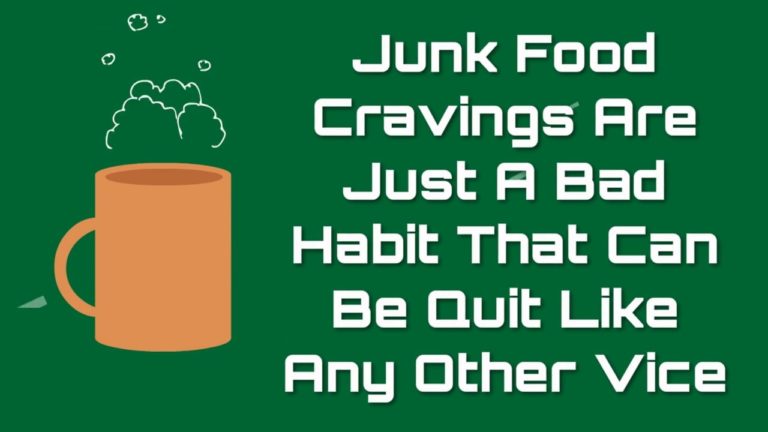
To Control Blood fat do as follows: –
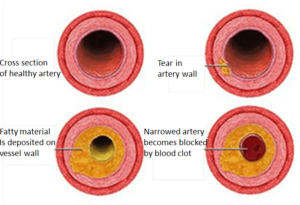
• Avoid fried and sweet articles.
• Avoid Tobacco, Alcohol, Beer in any form.
• Take lots of salad, sprouted methi (30 gm/day).
• Take fish oil supplementation.
• Limit your daily consumption of oil + ghee +
butter to less than 20 gms/ day
• Walk for 30 minutes in the morning and evening.
© 2024 All rights reserved
Design By Global Technology